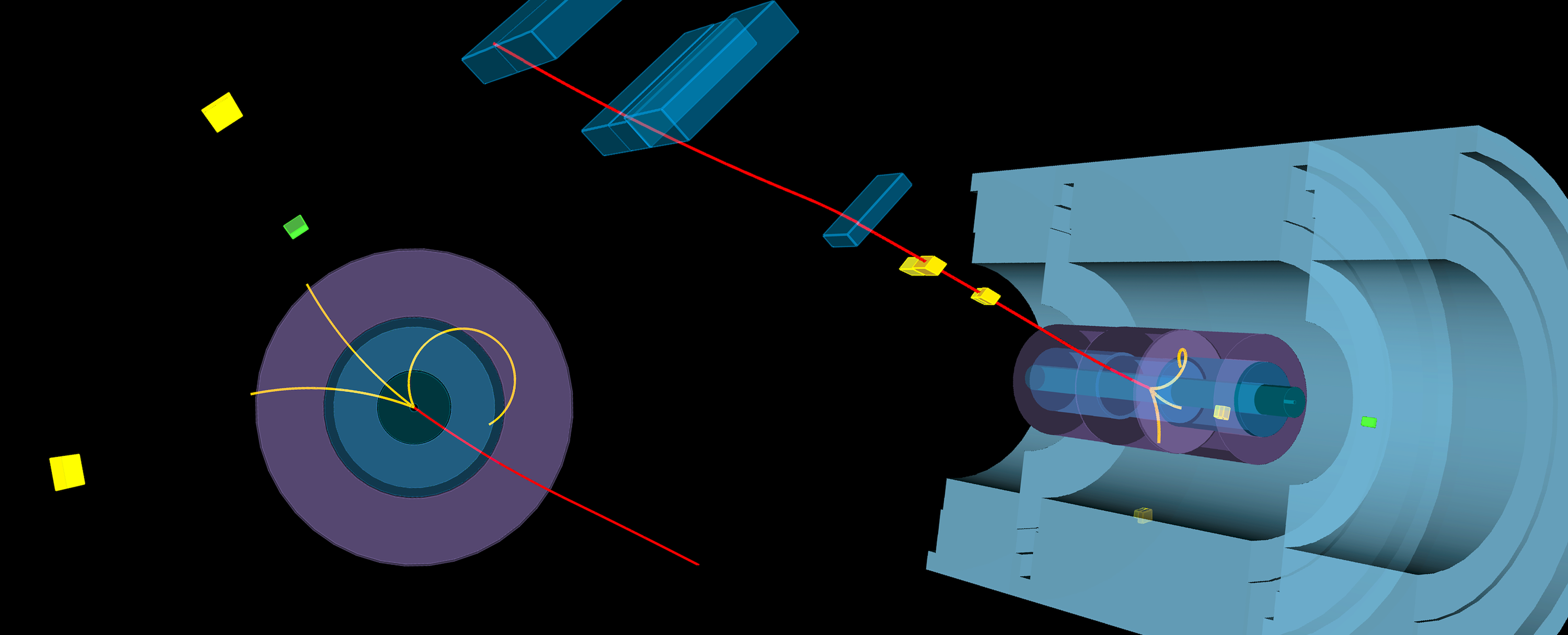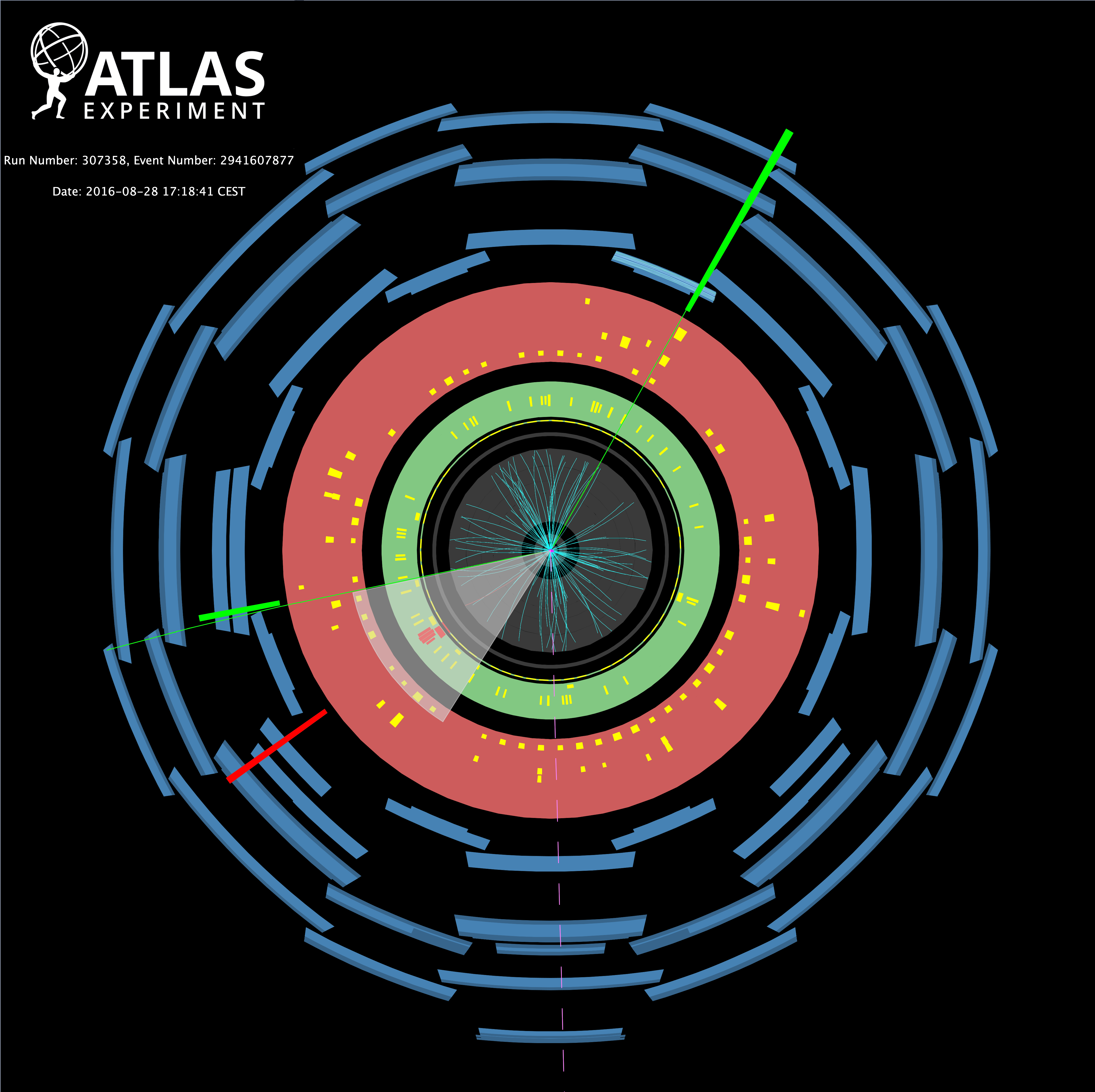ATLAS observes pairs of tau particles in heavy-ion collisions
7 April 2022 | By
Today at the Quark Matter 2022 conference, the ATLAS Collaboration announced the observation of tau-lepton pairs created when particles of light – or photons – interact during lead-ion collisions. The result opens a new avenue for measuring how magnetic the tau lepton is – a property sensitive to new particles beyond the Standard Model.
In everyday life, two crossing beams of light follow the rules of classical electrodynamics and do not deflect, absorb or disrupt one another. But, in quantum electrodynamics, things are different. Lead ions accelerated to high energy by the LHC are surrounded by an enormous flux of photons. For a short moment, these photons can interact and transform into a particle–antiparticle pair, such as a pair of tau leptons. These interactions are called ultra-peripheral collisions, which ATLAS physicists used to observe light-by-light scattering in 2019.
Rather than colliding head-on at the centre of the ATLAS detector, the accelerated lead ions pass by each other unscathed. This provides a uniquely clean environment for physicists to study collisions of photons into a pair of tau leptons. Further, the rate of tau-lepton creation scales to the fourth power of the number of protons in the ion, which is 82 for lead.
Using this innovative method of detection, ATLAS physicists searched for tau-lepton pairs in LHC heavy-ion data collected in 2018. The observed signal events correspond to a statistical significance well above the five standard-deviation threshold required to claim the unambiguous observation of a process. The production of tau-lepton pairs was measured at a rate compatible with the Standard Model expectation.
But what do these signal events look like? The tau lepton is a subatomic particle similar to the electron, but with a much heavier mass. This means it decays into other particles very quickly and is more difficult to detect in the ATLAS experiment. To identify candidate collision events, physicists relied on one of the tau leptons decaying into a muon. Meanwhile, the other tau lepton can decay into an electron or into charged pions. The event display above shows this distinctive signature; the muon is indicated by a red line and the three charged pions by yellow lines. As the lead ions stay intact, there is little to no additional detector activity.
With this measurement, ATLAS can now measure the tau lepton's magnetic moment with precision competitive with lepton colliders.
This new measurement of tau-lepton pairs also enables physicists to study the particle’s magnetism and a unique feature of the Standard Model. The strength of the tau lepton’s magnetism is quantified by the gyromagnetic ratio (g), which physicist Paul Dirac predicted to be exactly two. In the Standard Model, quantum effects make this slightly greater than two by around 0.1%. Physicists call these quantum enhancements the anomalous magnetic moment. Interestingly, new particles beyond the Standard Model can induce much larger enhancements. The anomalous magnetic moments of the electron and muon are among the most precisely known quantities in Nature. However, the short tau-lepton lifetime creates experimental difficulties to measure this quantity precisely. The most precise measurements of tau-lepton anomalous magnetic moment were performed at experiments at the Large Electron-Positron Collider (LEP).
The figure presents a comparison of the ATLAS measurement of anomalous magnetic moment of tau-lepton to those from LEP experiments. It is remarkable that the LHC can measure this process, and with precision competitive with lepton colliders. This new measurement opens the door to more detailed study of tau lepton’s electromagnetic properties at the LHC. With the much larger dataset expected from future LHC runs, physicists look forward to improved precision that may reveal interesting surprises.

Learn more
- Observation of the 𝜸𝜸 → 𝝉𝝉 process in Pb+Pb collisions and constraints on the 𝝉-lepton anomalous magnetic moment with the ATLAS detector (arXiv:2204.13478, see figures)
- CMS Collaboration: Observation of τ lepton pair production in ultraperipheral nucleus-nucleus collisions (CMS-PAS-HIN-21-009)
- Quark Matter 2022 presentation by Jakub Kremer: Observation of 𝛾𝛾→𝜏𝜏 in Pb+Pb collisions and constraints on the 𝜏-lepton g-2 with the ATLAS detector
- Quark Matter 2022 poster by Agnieszka Ewa Ogrodnik: Beyond Standard Model searches in ultraperipheral heavy-ion collisions with ATLAS
- See also the full lists of ATLAS Conference Notes and ATLAS Physics Papers.




